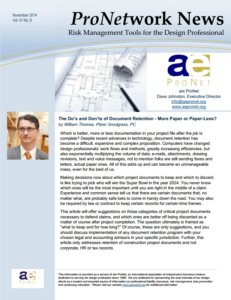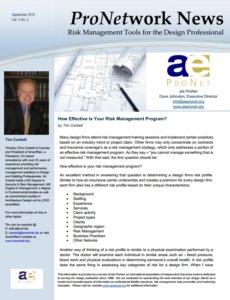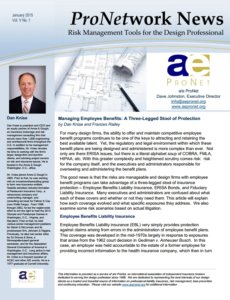They offer a bird’s eye view of construction sites. They provide breathtaking photographic opportunities for architects looking to showcase their work. And they’re fun to fly. However, while they may be intriguing tools for architects and engineers, drones open up the design firms that use them to many possibly unanticipated risks. These days, obtaining a drone is as simple as stopping at your local WalMart, but all drones are not created equal, nor are all drone pilots equally skilled and certified.
Victor O. Schinnerer’s Risk Management Blog recently offered an overview of this issue. Should your design firm use a drone in your administration of contracted services? Read on:
“Professional service firms have to be aware that the use of drones is not a simple transition in the process of observing the work on a project site. As with web cameras, drone cameras often produce far more images than are used in the evaluation of a project. If not properly denoted in a contract, the scope of the firm’s services could include the use of all the available images as part of the firm’s duty to observe and evaluate the project as part of construction contract administration duties.
“Additionally, while licensed drone operators are undoubtedly careful about having general liability insurance that protects others from their negligence in aerial activities, and follow the FAA’s rules and guidelines, many firms using drone photography are doing so as amateurs. Turning hobby activities into commercial uses is likely to be unlawful, dangerous, and uninsured.”
Continue reading Drone use can put firms at risk beyond their knowledge by Frank Musica









